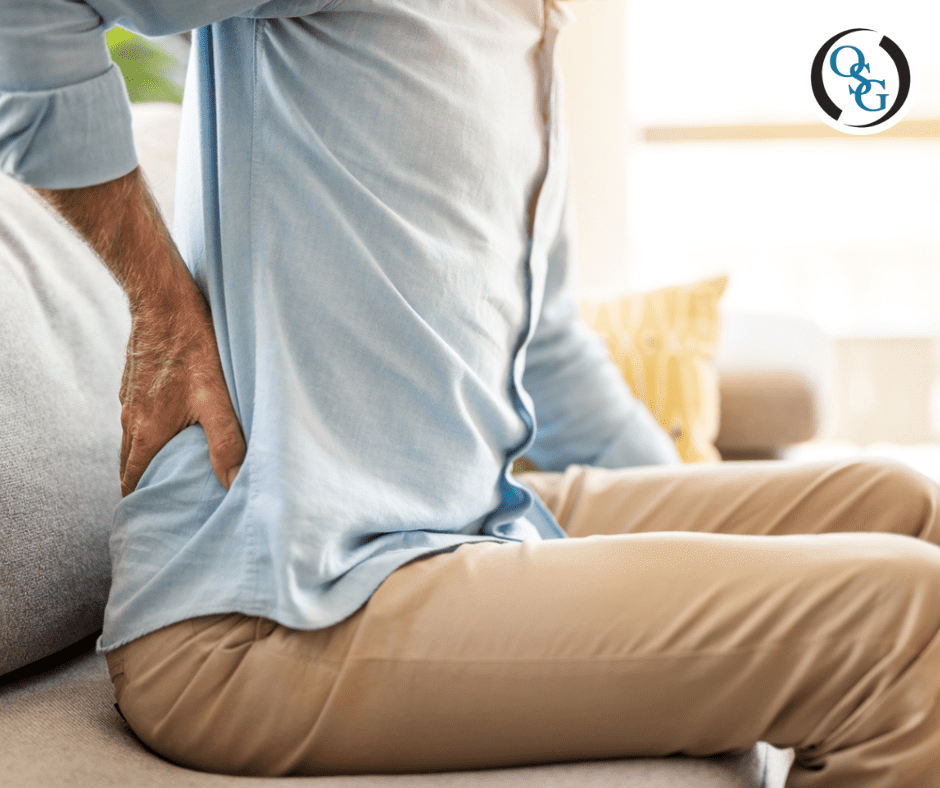
What is Spinal Stenosis?
Thanks to the spine, we can stand up tall and take on our days. The spine is a column made of bones called vertebrae that give us stability, balance, and support for our upper body. Spinal nerves and surrounding muscles, ligaments, and tissues make up the spinal cord that surrounds and runs through the openings in the vertebrae. If these parts are damaged, spinal stenosis can occur.
What is Spinal Stenosis?
Spinal stenosis is a condition in which the spinal column spaces narrow and therefore compress the spinal cord and reduce space for the nerves. This process occurs gradually and can occur anywhere along the spine. As a result, a spinal nerve or part of the spinal cord can become so compressed it causes pain, numbness, tingling, or weakness in the area.
Spinal stenosis occurs most commonly in the lower back or your neck. These two types are referred to as cervical stenosis or lumbar stenosis.
Causes of Spinal Stenosis
Spinal stenosis typically occurs when something in your body is causing those spinal gaps to close and compress. Some of these conditions include:
- Bone overgrowth – Damage caused by osteoarthritis in your spinal bones can create bone spurs that grow into the spinal canal bones. Paget’s disease, another bone disease, can also cause bone overgrowth in the spine.
- Herniated disks – The soft cushions that work like shock-absorbing cushions throughout your spine and between the vertebrae often dry out with age, causing painful herniated disks.
- Thickened ligaments – The ligaments that help hold the bones throughout your spine together often thicken over time and become stiff. These thickened ligaments can also bulge into the spinal canal as you age.
- Tumors – Abnormal growths can form in the spinal cord, within the membranes surrounding the spine, or in the vertebrae, causing compression.
- Spinal injuries – Trauma to the spinal area can cause dislocations or fractures to the vertebrae or other spinal canal parts. Swelling can put pressure on the spinal gaps and nerves.
Symptoms of Spinal Stenosis
If the narrowing of the spinal column spaces is minimal, you will likely not experience any symptoms. If the narrowing is a lot, nerves can compress, and other problems will arise. Here are some of the signs and symptoms to look out for with this condition:
- Weakness in the legs or arms
- Lower back pain while standing or walking
- Neck pain
- Problems with balance
- Numbness in the legs or buttocks
You may notice that sitting in a chair relieves your symptoms, but they will often return once you stand up again.
Consult with a medical professional if you have any concerns about your spine or are experiencing any of the signs and symptoms of spinal stenosis.
Orthopaedist in Fairfield County
It’s crucial to seek expert medical treatment if you are dealing with problems or pain associated with your bones or joints. Give the professionals at Orthopaedic Specialty group a call at (203) 337-2600 and let us know how we can help you! Don’t let that pain hold you back from living your life. Your health and safety are our top priority.
